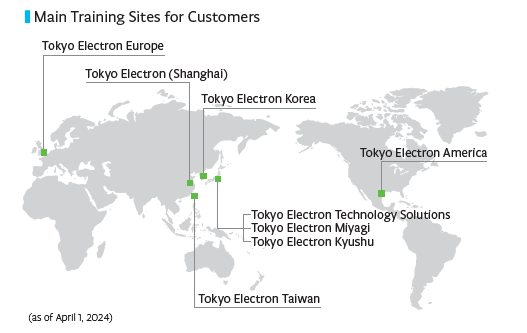Ensuring Safety for Customers
Providing Safety-Related Information on Products to Customers
We are committed to providing sufficient safety information on our products so that customers can safely use them. All our products come not only with a manual specific to the product specifications, but also a TEL Safety and Environmental Guidelines manual applicable to all our products.
The TEL Safety and Environmental Guidelines manual is available in 12 languages* to ensure that customers around the world can understand the content accurately; it describes examples of potential risks associated with using our products together with the methods for averting those risks, as well as safety measures applied to products and recommended methods for product disposal, divided into such categories as chemical, electrical, mechanical and ergonomic.
If new safety warnings are identified after a product ships, we promptly report these to the affected customers. We also make particular efforts to ensure that necessary information is communicated to customers to whom we deliver products that involve the use of hazardous chemicals or high-voltage electricity.

TEL Safety and Environmental Guidelines
12 languages: Japanese, English, German, French, Italian, Dutch, Russian, Portuguese, Korean, Traditional Chinese, Simplified Chinese and Finnish
Global Expansion of Training for Customers
We establish training centers all over the world, mainly at our development and production sites, and provide global training to customers on equipment operation and maintenance so that products can be used safely. With our customers' safety as the priority, we conduct effective training using remote learning and training videos, while flexibly dealing with changes in circumstances.
Going forward, we will strive to further enhance our training environments, including continuously expanding training equipment lineup and updating the training centers of our overseas subsidiaries.

